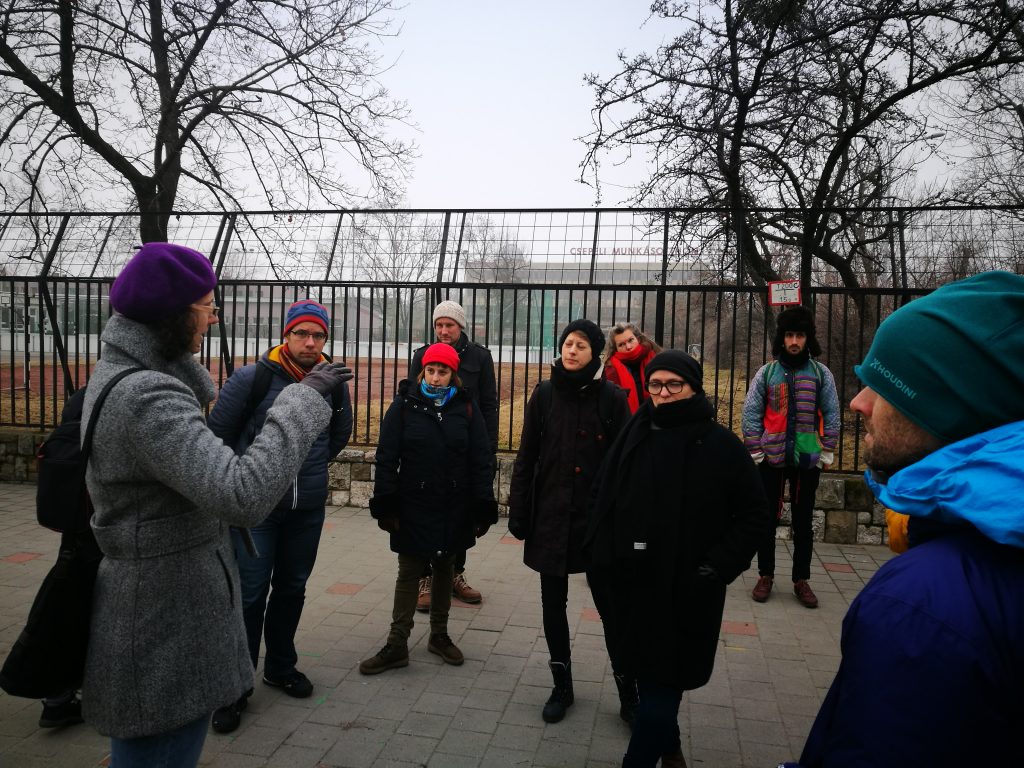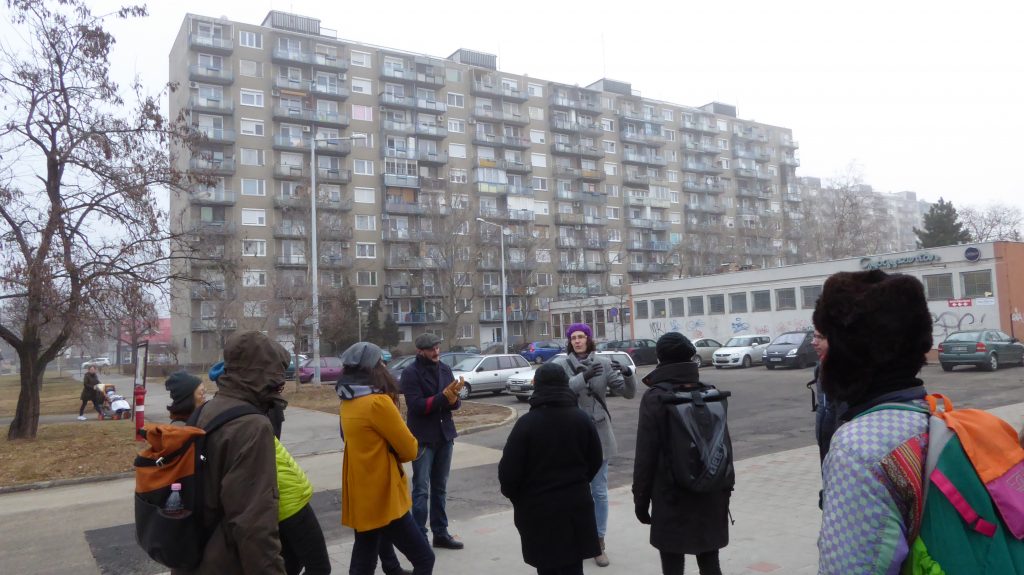Theory is nice, though after two days of being in a closed-in space you can feel how everyone would like to finally leave the confines of the building.
Another reason is that the two groups of four artists / artistic groups will have to present something at the end of April, after all the presentations about the project’s theoretical context and other practical examples. And not just because the organizers of PICTURE Budapest – Østfold planned so in their grant application, but because after the long-winded introduction I can see the excitement in the eyes of the artists: the excitement to create art. And it is not surprising that an artist would want to show off what they can achieve after being invited into a project, working in a found (public) space.
But to this end you’ll need spaces and locations that inspire a person’s imagination. Because of their short time frame participants had to accept that they cannot discover the entirety of Csepel. It takes two to tango: it depends on the diligence and expertise of the Hungarian organizers who must recommend a wide variety of locations, and also depends on the artists who must choose the best from this selection.

Though I did not mention it in previous entries, there had been various short forays into the premises of Csepel Művek in the last few days. No one can doubt that the Artopolis Foundation, the organizers of PLACCC Festival, have intimate knowledge about Csepel’s glorious past and pale gray present. They have been doing work in the district for years, have planned various artistic projects there, and even though they can only work at a slow pace among the buildings of the enormous Csepel Művek (which has, as of its privatization, many hundreds of individual owners!) they still have their contacts, their friends there, which does open some doors…
They had already invited the artists of PICTURE Budapest – Østfold on a long walk and factory tour during the week, and we attempted to enter a bunker that houses various rock musicians as well. The last day in Budapest held an interesting program for us: Szilvia Kovács, a researcher with an economist and sociologist background, who has been doing research about Csepel for a few years, took us on an extreme sightseeing tour in the district.
Our tour began at Csepeli Munkásotthon, and our researcher-tour guide’s fact- and data-centric, somehow still personal commentary about a special kindergarten surrounded by blocks of flats, about the “famous” elephant playground or about the local paper factory all reminded me of the futility of thinking through preconceptions.

I have written about this before: we Hungarians are tourists in Csepel as well, and our prior, superficial knowledge about the factory city obscures, if not the truth, but more than one layer of reality. During her sociological guided tour Szilvia Kovács gave us a virtual map of the district, which allowed us to see the suburban style little houses there, along with the local suburban railway – something we can also see sitting on the local “sightseeing” BKV bus, staring out through the window.
We are near the administrative border of Budapest, and not one of us thought that Mother Nature is nearby, almost untouched, less than a fifteen minute bus ride from where we are, strolling among buildings for metal works, walking Csepel’s cobbled alleys and wide streets. After a little rest the participants will sit down on the second floor of the worker’s home, start summarizing the day’s (and the week’s) events, and bending over their maps and laptops they will begin planning what will happen in Csepel, and where, at the end of April.
Text by Tamás Jászay
Translated by Dávid Cseh